Fragmentation, Centralization, and Civil War in the Japanese Ultra-Left
Harumasa Abe
The following article is the second installment in an ongoing series retracing the history of revolutionary antagonism in Japan in the 20th century. In the first installment, Sabu Kohso sketched a panoramic portrait of Japan’s “long 1968,” arguing that its erasure from memory continues to act upon the horizons of political struggle in the country today. In the present article, Harumasa Abe deepens this analysis, arguing that the internecine violence between revolutionary groups during the 1960s and ’70s grew out of a “maximal tension” between the two opposed dynamics of centralization and fragmentation. Far from being an isolated case, Abe argues that this tension constitutes a central aporia that any insurrection must confront in advancing toward revolution: given that the insurrectional impetus detotalizes and fragments existing socio-political orders, it has long been assumed that in order for it to expand into a revolutionary opening there is a need for a party formation that can enact a supplementary political process introducing revolutionary ideas and institutionalized platforms into the insurrectionary masses. However, as Abe shows, it was precisely this effort to enact a pivot from the “larval" party of revolt to the “actual" party of revolution that led to the tragic massacres between the new left sects, leaving a hundred comrades dead and over five thousand wounded. If they wish to avoid reproducing such deadly failures, any effort to resurrect the party-form in the 21st century must reckon not only with this history, but with the abiding impasse it exposes.
Other languages: Español
In a recent book looking back on Zenkyōtō (the All-Campus Joint Struggle Committees), there is a section of questionnaires addressed to four hundred fifty participants of the struggle of 1968.1 In response to a question concerning the factors leading to disengagement from the movement, 37% of the answers ascribe the main cause to a discouragement brought about by the intra-sectarian violence (uchigeba), and 25% to a despair related to the executions of members within the United Red Army (URA).2 These two events indeed epitomized the downfall of Japan’s new left movement. They delivered a fatal blow to the camp of the radical left, while also providing the authorities and liberals with an ideal excuse to discredit the revolutionary movement in its entirety. Meanwhile, leftist criticism or self-criticism concerning these events was mostly directed toward the general attributes of new left sects such as party politics, armed revolution, and Marxism, which encouraged the subsequent upswing of opposing trends such as non-violence, humanism, traditional unionism, and libertarianism.
With this demoralizing pivot in mind, our objective here is to present another view of “Japan’s long ’68” and its transmutation, one based on an immanent critique of the impetus that drove its development.3 As we shall see, the decade of insurgency was initiated by political efforts to organize the nation in opposition to American hegemony, but the insurrectionary masses overflowed this political framework, spilling out in every direction throughout the 1960s, creating a multifarious movement of resistance. It was in response to this diffuse upsurge of rebellion that the divergence between the new left sects took shape. This impetus involved two dynamics: centralization (the constituent process of party organization) and fragmentation (the destituent process of mass insurrection). Our basic hypothesis is that the two tragic events invoked above — the United Red Army Affair and uchigeba — were each born out of the maximal tension between the two dynamics, albeit in two different directions. While the phenomena of internecine struggle within Japan’s new left movement emerged in response to singular problems of sectarianism, we believe it also points toward a problematic inherent to revolutionary organization more generally.
Two Roots: BUND and Kakukyōdō
To grasp the background of these tragedies, it is necessary to return to the inception of the new left movement. There are two roots from which various groups and tendencies diverged. One is the Communist League (BUND), that split from the Japan Communist Party (JCP) by tending toward an insurgent movement; another is the Revolutionary Communist League (Kakukyōdō), that sought to create a new revolutionary party outside the influence of the JCP.
The struggle against the US/Japan Security Treaty (Ampo) of 1960 gave birth to the biggest uprising in Japanese modern history. It was spearheaded by BUND, which was established in 1958 by the student members of the JCP who left it, while radicalizing their actions in opposition to the party’s pacifist conversion in 1955. In contrast to the JCP’s parliamentary efforts to solidify national independence from America, BUND advocated direct action to overthrow “Japanese imperialism” as part of a world revolution. During the actions to disrupt the Ampo, BUND’s intervention succeeded to a remarkable extent in orienting the entire crowd, overpowering the leadership of political parties and labor unions. During the final phase of insurgency, however, the masses themselves transcended BUND’s organizing efforts. On June 15th, a BUND member active in Tokyo University was killed during the attempt to break into the National Parliament. The following day, the mood of the demo was intensified to the extreme — it was there that, in the words of Masaaki Hiraoka, a BUND member at that time who would become influential as one of the leading ideologues in the late 1960s and the 1970s, “BUND was disassembled amid a massive swirl of enraged students, workers and citizens successively storming parliament.”4 Hiraoka describes the disposition of his fellow students at Waseda University on the morning of the 16th:
Returning to the university after the clash, the faces of students had changed overnight. Gathering around campus, they set about preparing the next demo, making humble placards out of cardboard with an inscription of the character "opposition," which was attached to a wooden stick, that is, technically a cudgel.5
Here we see an embryonic form of stickfighting (geba-bō) that would become the default weapon in street battles after 1967.6
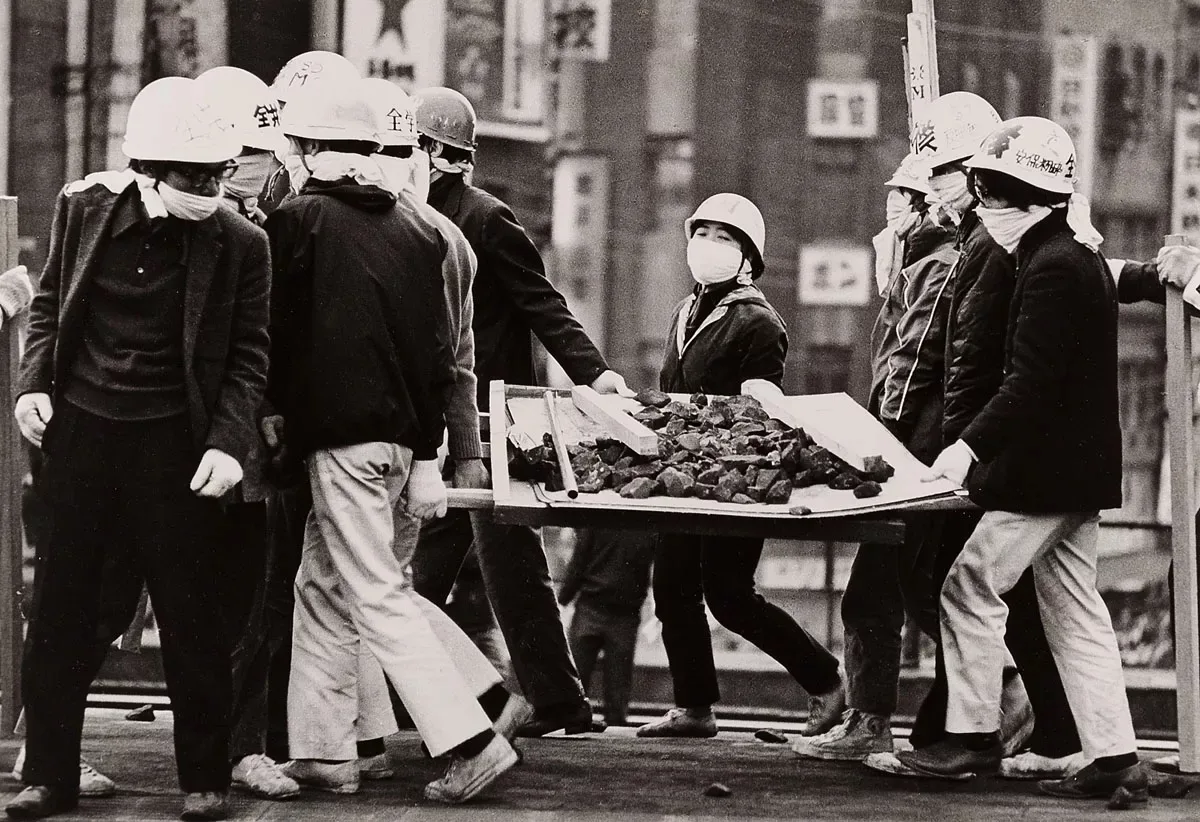

After the Ampo experience, Hiraoka left BUND, shifting his focus to the struggle of the excluded from the Japanese civil society. In 1961, he organized a groupuscule called the League of Criminals, which advanced an extremely minoritarian proposition: “all crimes are revolutionary.” In the late 1960s, he sought to synchronize the Japanese underclass with the revolutions in the third world through a mediation of the affective drives of the masses. In the late 1980s, he wrote an essay in reminiscence of “an anarchic situation” in which Tokyo found itself in 1945 immediately following the war. Capital had been largely flattened by US air raids, destitute masses roamed the burnt-out city, gathering in black markets. For Hiraoka, such scenery resonated with the one created by the enraged masses during the anti-Ampo action — in it, he perceived: “when state power collapses, ‘the body’ is exposed.”7
In these diverse situations, the common denominator “the body” refers to masses that have been abandoned by, or untethered from, the prevailing social and political framework. The body is the anarchic being of the masses that emerges on the other side of institutions. This could be understood as a form of spontaneity, in its historical opposition with organization. This body is a force of detotalization or fragmentation that stands opposed to the totality constructed by conscious organizing. In the postwar turmoil, the body signified a mass corporeality liberated from the totalitarian statism that had ruled the populace during the long-lasting war. The 1960s’ mass insurrection revived the same scenery, but this time involving the active engagement of the people. This time, the body announced a force that erupted against the state, and this in spite of the conscious organizing of BUND. As we shall see, it was this movement of impetuous masses that had dispersed from the coalition of the anti-Ampo movement in a process of fragmentation that would reverberate to create an insurrectionary current in the leadup to 1968. During this development, the common weapons — geba-bo, steel pipes, stones and Molotov cocktails with helmets — were born out of the primitive cudgel as an extension of the body exposed in a temporary chasm of state power. For revolutionaries, the origin of their armament is always this body, one consistently asymmetrical to the militarized bodies of state forces.
In contrast to BUND, Kakukyōdō was established by a group of intellectuals in 1957. One of its masterminds was a self-taught philosopher named Kan’ichi Kuroda. Kuroda developed a theory of revolution combining a materialist reading of the ontology of Nishida Kitarō, which had influenced a group of prewar philosophers of the Kyoto School, and the theory of technique developed by Mitsuo Taketani, which had become popular in the postwar period of economic reconstruction, as faith in techno-science was gaining ground in Japanese society.8 As such, Kuroda’s thought entailed a mixture of modernism and anti-modernism: it was modernist as a practice of Taketani’s theory of techno-science, but anti-modernist in its organizational theory, which was based on Nishida’s “logic of place” or “nothingness” as receptacle. In Kuroda’s Marxism, the human is considered as a material that becomes autotelic, while labor is defined as a technical practice that becomes teleological. It is through this labor that the proletariat would realize a material consciousness in the form of a party. Simply put, Kuroda took for granted a harmonious relationship among labor, proletariat, and the party, which stands in contradistinction to the views of Marx, who considered the proletariat as “a class of civil society which is not a class of civil society,” and which internalizes the dissolution of class society.9
While concretizing the above position in his first book, Hegel and Marx (1952), Kuroda was an isolated intellectual; but in 1956, he encountered Ryu Ōhta, the first adamant Trotskyist in Japan, who opened Kuroda’s eyes to the actuality of the world conjuncture.10 Thus, one of the two major new left sects was initiated around them. Ōhta and Kuroda started the Trotskyist Comrade Circle (Trotskyist Dōshi Kai) and then Kakukyōdō. But soon after, Kuroda split from Ōhta and his group (the Fourth International Japan) over his opposition to Trotsky’s unconditional support for the “workers’ state” of the Soviet Union, with the aim of uniting anti-imperialism and anti-Stalinism. Thereafter, Kuroda focused his effort on theorizing the party of the proletariat that would realize this material consciousness. Thus, the organizational nature of Kakukyōdō faithfully reflected Kurodaism, which prioritized an endless consolidation and limitless expansion of the party of consciousness.
In later years, Ōhta changed his position many times, in each instance pioneering new tendencies of radicalism, from Third-Worldism to underclass revolution to ecology, before ending his life as an antisemitic conspiracy theorist. For his part, Kuroda surprisingly became a worshipper of national culture toward the end. It is difficult to avoid the impression that this fact — namely, that one of the two roots of Japan’s new left movement was initiated by the encounter between these two — already prefigured the tragic developments that would follow.
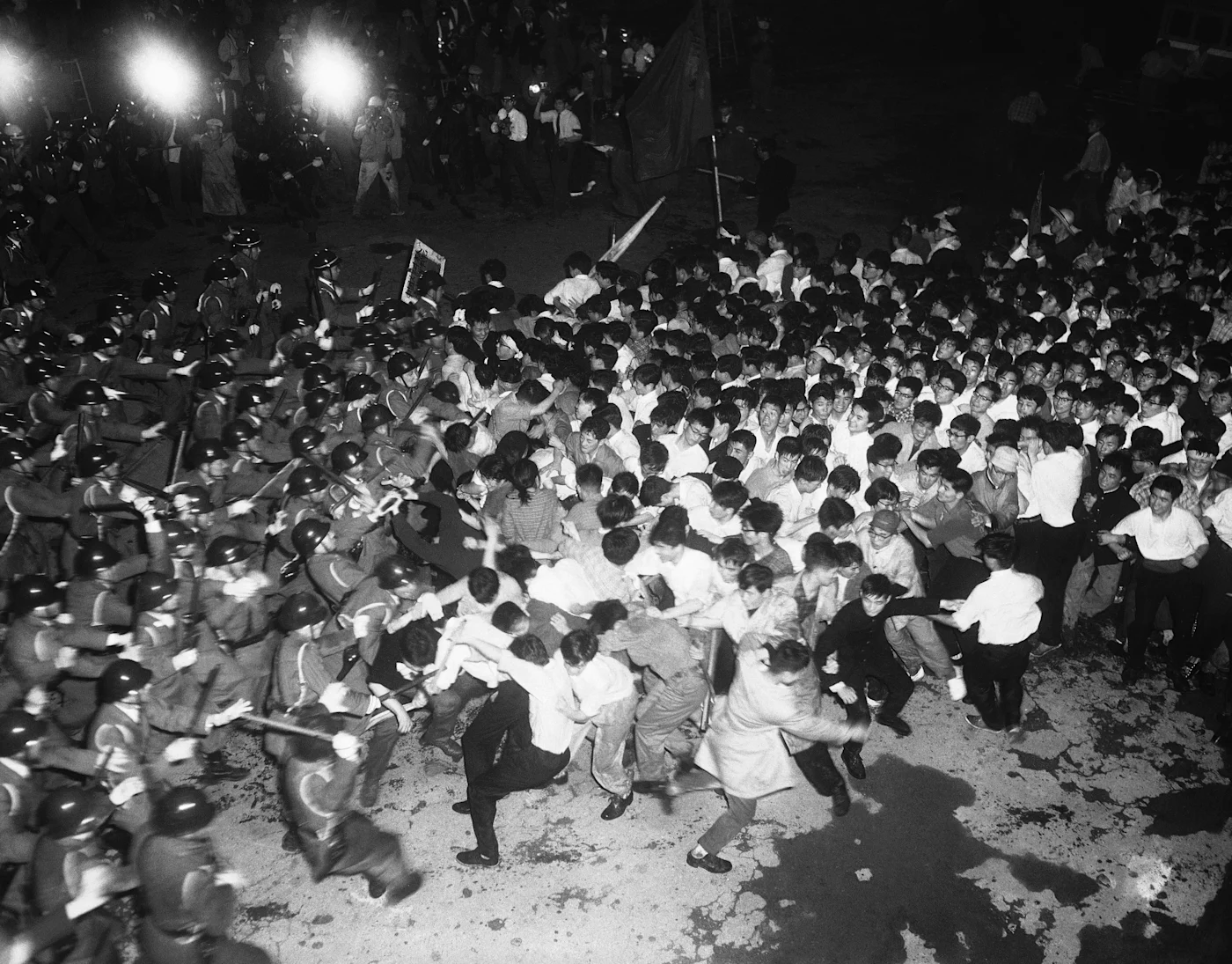
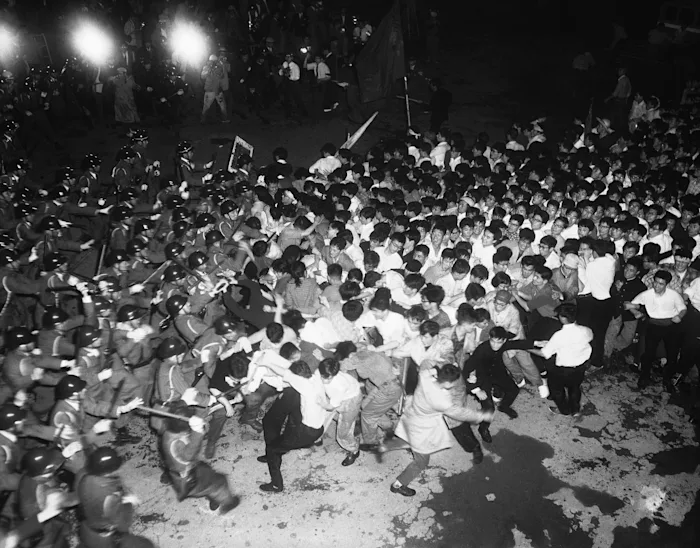
After being overpowered by the mass insurgency of 1960, BUND split into three factions, each arranged according to their respective assessment of their bitter experience. While these organizations could not control the mass impetus, their diverging responses to it would determine the varying contours of a coming party. Among the three factions, two that attributed BUND’s failure to its fatal shortcomings — to its failure to become a vanguard party and to its lack of tactics for mass mobilization — joined Kakukyōdō, due to their accordance with the latter’s determinist outlook. The first uchigeba took place in 1961, wherein Kakukyōdō attacked an assembly of several groups, including the remnants of BUND, with a geba-bō made of oak. This attack was allegedly spearheaded by the members of BUND’s factions that had joined Kakukyōdō, who employed the hard sticks developed from the original cudgel.
Chūkaku-ha and Kakumaru-ha (1)
In 1963, Kakukyōdō split in half. Some joined the group close to Kuroda (the Revolutionary Marxist Faction or Kakumaru-ha) while others joined the group centered around the breakaway factions of BUND (the Core Faction or Chūkaku-ha). Reflecting ex post facto, we can recognize the inevitability of the fissures that developed between those who pursued the party of consciousness and those who embodied the party of tactics.
Thereafter, Chūkaku-ha demonstrated their remarkable strength in street fights, especially during the late 1960s. This first became evident during the action to disrupt Prime Minister Eisaku Satō’s visit to Vietnam at Haneda Airport in October 1967. Their militant impetus would later lead to a mass riot in Shinjuku Tokyo on the International Anti-War Day, October 21st, 1968. This militancy was driven by Chūkaku-ha, inspiring many other groups. In terms of its political line, Chūkaku-ha revived the Leninist conceptions of armed revolution that the JCP had abandoned. Its theoretical core was the humanist theory of alienation found in the young Marx, which seeks the sublation of alienated labor. Irrespective of diverging political lines and theories, however, the forces of the new left would join together to disrupt the status quo of state power while intensifying the impulse toward street fighting, thereby expanding the horizon of the mass impetus. By this empowerment, the struggle exposed a series of contradictions in Japanese society that the conventional left had failed to tackle — from the state’s complicity with the American war in Vietnam to capital’s destruction of local communities to the hierarchization of society by the education system. In consequence, everything became political, in accordance with the slogan “the personal is political,” which had its origins in the American student movement and second-wave feminism, and became popularized throughout the global 1968. If the anti-Ampo movement of the 1960s involved a nationalism pitted against American hegemony, the struggle of 1968 expanded the mass impetus thanks to the reverberating fragments of the 1960s movement.
As street fighting began to be introduced into universities, Zenkyōtō was formed as a decentralized coalition gathering together student fighters who no longer belonged to any of the sectarian organizations. Chapters gradually emerged in various universities, and even some high schools. Across the nation, they staged synchronized campus occupations (“barricade struggles,” as they called them), using the occupied space as a basis to deepen the metropolitan insurgency. In this way, amidst the intensifying opposition to state power, so-called “non-sectarian” radicals emerged as a new mass impetus. Although they presented a challenge to the new left sects to which they could have responded, they chose to ignore it, precisely because actively smothering or absorbing it would have meant inviting nothing short of an essential crisis into their organization.
The United Red Army (URA)
Militarization of the radical left became a world-wide tendency in the post-1968 climate. In a sense, it signaled the introduction of the armed revolution of the third world, with Vietnam as its frontline, to the territories of the capitalist nation states within the imperialist dominion. Modeling itself after examples from abroad, “the body” (in Hiraoka’s sense), with its primitive armaments, now sought to reshape itself into a guerrilla army. In Japan, it was the Red Army Faction (RAF) that spearheaded this current. After the three-way splits of 1960, BUND had experienced further separation until 1966 when it was reconstructed in the name of the Second Communist League (BUND), which had absorbed some former members and groups as well as new recruits. Along with Chūkaku-ha, the second BUND played a leading role on the street in the late 1960s. Then, in 1968, the RAF emerged as a faction of the second BUND in the Kansai area.

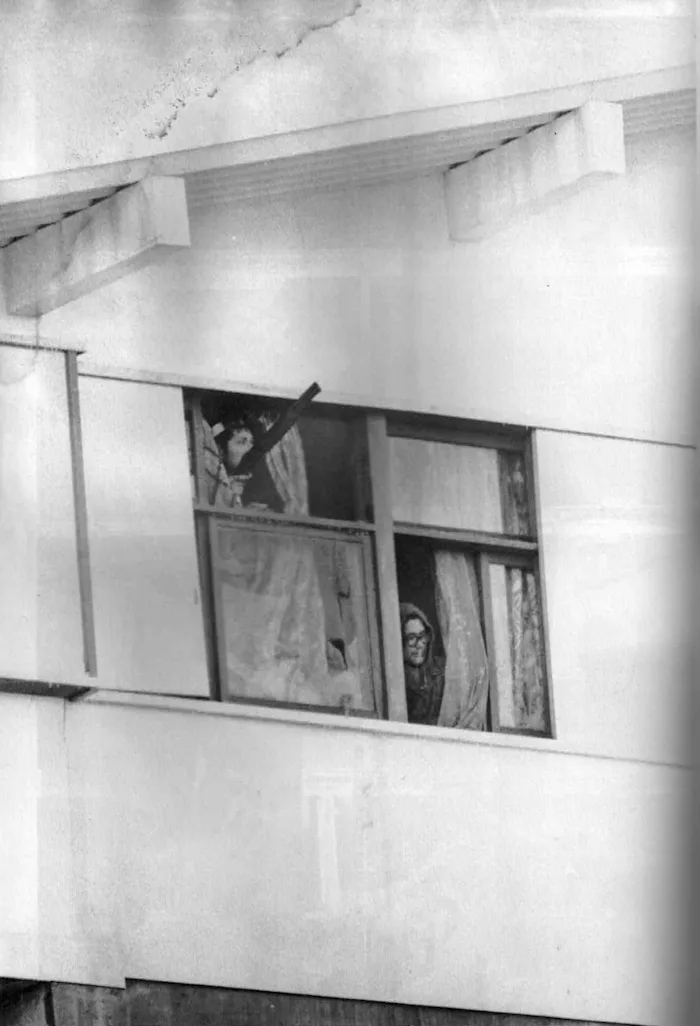
The RAF held a globalist view of revolution: the age of world revolution began with the Russian Revolution of 1917, and the present is a transitional phase in the maturing of a final battle. However, instead of waiting for it, it is imperative, they insisted, to adopt a subjective position in order to accelerate the transition to a world revolution, a phenomenon they referred to as “the pre-stage armed uprising.” To prepare for it, they initiated military training in the mountains, during which time many members were arrested. In 1970, they succeeded in carrying out the first hijacking in Japan, which had a noticeable impact on other radical movements and sent a shockwave through Japanese society.11 But this success made the RAF the primary target of a police crackdown. Driven into the margins, its shrinking members engaged in a series of desperate attempts, including a bank robbery and an armed raid on a police station. All ended in disappointment, with only members’ arrests.
In 1969, another militarist sect, the Japan Communist Party: Revolutionary Left Faction (RLF) was established among the pro-China faction of the JCP and the breakaway members of a Maoist new left sect called the Marx-Leninist League. This new group cleaved to a platform of anti-American patriotism following the PRC’s political line, which was anomalous among the new left movement. The group had been much smaller and much less conspicuous than the RAF, until it attempted to disrupt the Foreign Minister’s visit to the Soviet Union at Haneda Airport using an unexpected tactic, namely, to trespass the security perimeter from the sea of Tokyo Bay, an act that earned widespread attention. In 1970, to get weapons, they robbed a gun shop and attacked a police station, during which one of their members was shot to death by the police. Like the RAF, the Maoist group became a chief target of state repression. While the leaders and members of both groups were incarcerated, they joined hands.
By 1971, another wave of fragmentation affected the militant impetus, with the second BUND splitting into as many as nine sects (a process they described as “factionalism”). This factionalism was a reflection of diverging ideas of a party: the party of armed struggle (the RAF), the party of tactics (like Chūkaku-ha), the party of community, the party of politics, and so on. What provoked this new fragmentation was undoubtedly the emergence of the two extremists: the RAF and the RLF. While holding totally distinct and even opposed political ideologies, the two were alike in that both shared the idea of organization, namely, to treat the party and the insurgent army as one and the same. This idea would make them the militarized bodies of a miniscule state force, as it were.
The RAF and the RLF initiated a joint program for armed struggle centered around firearm training that took place on the base that the RLF built in a secluded mountain. In July 1971, they were institutionally synthesized under the auspices of the leaders from each group: Tsuneo Mori of the RAF, and Yōko Nagata of the RLF. The new organization was dubbed the United Red Army (URA). Soon after, disciplinary executions began. In August of the same year, two members of the RLF who had escaped from the mountain base were assassinated by members of their group. Thereafter, twelve members of the URA were killed one after another following interrogations in the style of a people’s court, which, instead of being reserved for the enemies of revolutionary war, targeted their own comrades. One member was assaulted by the group after being accused of being a traitor to the revolution and the party. Members considered undisciplined were badly beaten and left to die.
Besieged by the police, the remaining members began an escape journey from mountain to mountain. While many members were arrested one by one, five of them reached an inn where they took a hostage and engaged in gun battles with the surrounding police forces. The scene, which ended with their arrest, was broadcast on TV in real time, attaining an unprecedented viewer rating. Subsequently, when the internal executions were exposed in the media, scandalized reports trumpeted the downfall of revolutionary left in the most painful manner.12 The leader of the RAF, Tsuneo Mori, would later commit suicide in his jail cell.
The URA was obsessed with firearms. This had a lot to do with their organizational conformism, modeled as it was after an infantry. This choice coincided with their conception of the party: the formation of one’s party and the formation of one’s army flow from one and the same set of priorities. The strictly disciplinary characteristic of this organization stood in stark contrast to those small sects or groupuscules of a hyper militant orientation that, in subsequent years, would choose bombs as their weapon of choice by which to attack the ruling powers, such as the RG Faction of the Second Bund and the East Asia Anti-Japan Armed Front. The latter’s organizational form tended toward small cells of guerrilla fighters, and understood themselves as groupuscules rather than as a party. None of them got involved in serious internal strife.
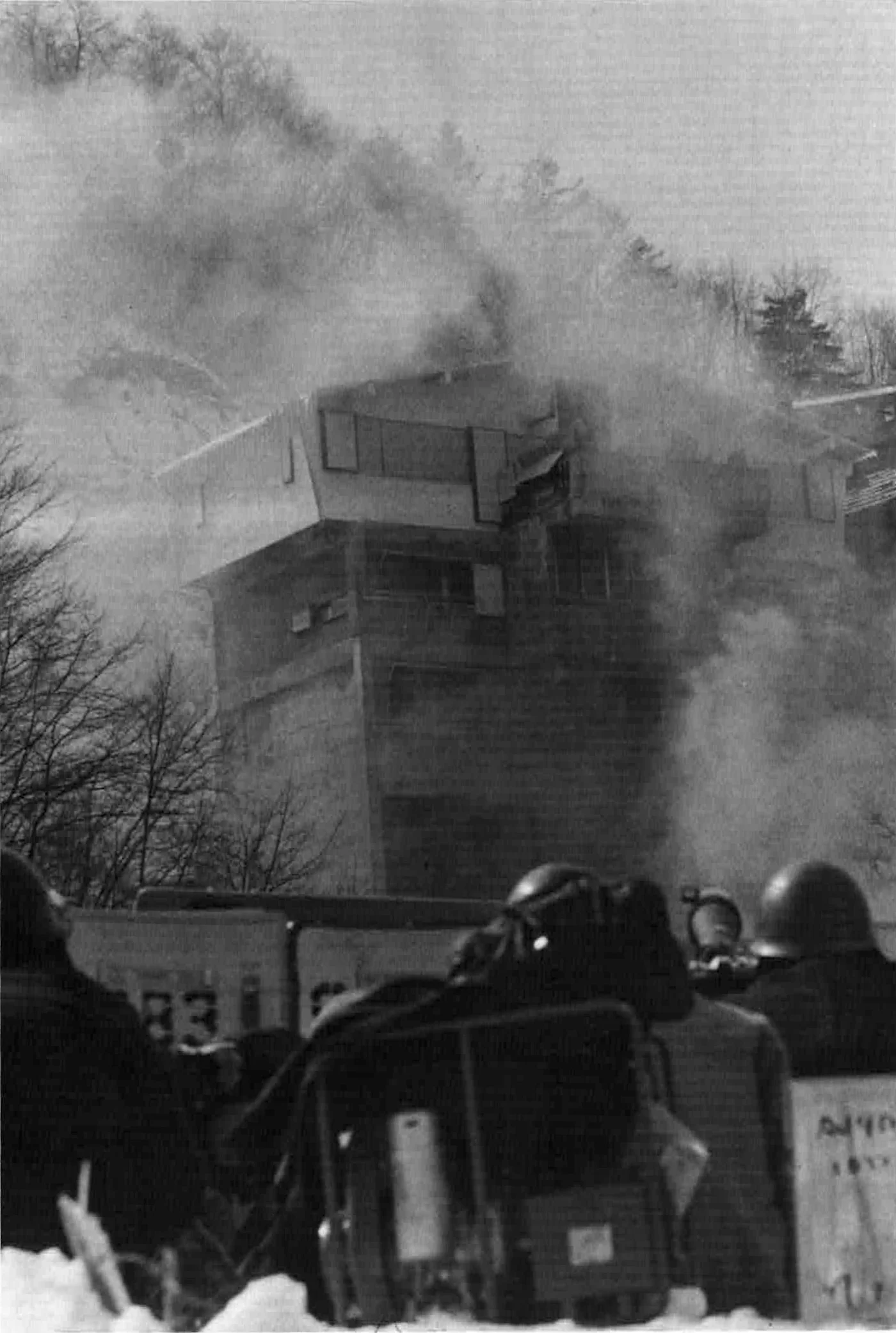
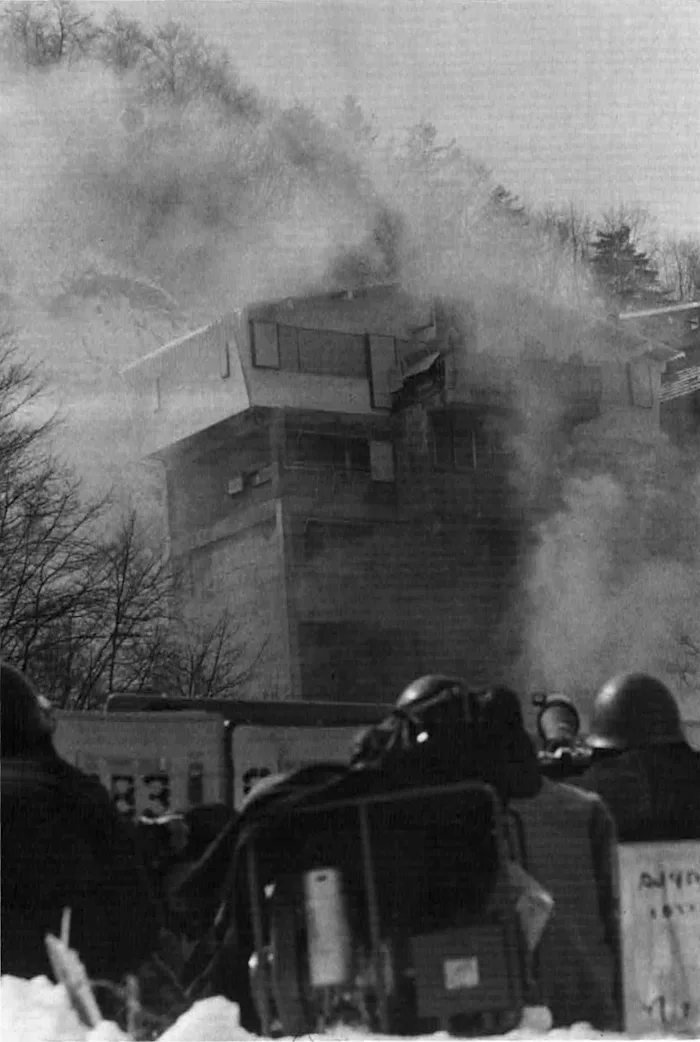
It is notable that, while so many other sects were drawn into what we might call schismogenetic processes, the formation of the URA was an untimely attempt to force a unification. The fragmentation of a national organization and the synchronicity of reverberating fractions provided the entire force of opposition with a tremendous source of empowerment, owing to its productive generation of multiplicity. Although we cannot name them here, many forms of resistance from small to large emerged that disrupted, in reverberation, the reproduction of consumerist society and made the general public sense that a revolution might be imminent. By contrast, within the new left sects, this fragmentation or “factionalism” was looked upon as a failure that weakened the original unity that had previously existed. Worse still, it was accused of betrayal, of selling its spirit to the wrong ideology. It was this conviction that grounded their commitment to uchigeba. The disciplinary killings of their own comrades emerged from within this tremendous tension between the overall current and the desperate attempts to counter it.
In the fanatic discipline of the URA, one may also sense a moral resistance against the impetus toward fragmentation, or “the personal is political,” that developed alongside the advent of consumerist society. Thus, in the URA’s internal trials, every gesture and feature of the individual became an object of scrutiny. The first victim of this execution was a female fighter whose feminine behavior and features were accused of being counter-revolutionary. In this way, the URA Affair attested to the transforming socio-political climate of the time, precisely in its negative response to it, that is, by its supreme injunction to prioritize the uniformity of the militarized party.
The URA Affair might be seen also as an introverted, fanatical, and egregious enactment of the discourse on popular justice. Around the same time, in 1972 in France, a famous debate took place between Michel Foucault and militant Maoists, published under the heading, “On Popular Justice.”13 Their coincidence exhibits the global climate of the post-1968 period, where the question of justice was seriously posed vis-à-vis the violence involved in the process from popular uprising to revolution. Foucault insisted that a “people’s court” could not represent “popular justice,” which should rather be the target of its attack, since the very form of the judicial system would revive a state apparatus, the representative of public authority and violent instrument of class power. For the Maoists, on the other hand, the people's court was understood as a revolutionary state apparatus and a necessary political process. Like the French militants, the RLF was Maoist through and through, while the RAF was arguably closer to Maoism than all other factions of BUND, particularly in its conviction that the Red Army in and of itself embodies popular justice.
As is well-known, Mao Zedong invented the strategy of besieging the power centers in the cities by building bases in the countryside, which provided the model for the revolutionary commune movement. But this commune was nothing but a transitional state apparatus, in contradistinction, for instance, with the autonomous territories of the Zapatistas that we observe today. What distinguished Mao’s strategy was to use the violence internalized in the judicial power of the people's court for organizing a mass rebellion against status quo, which was consistently observed from the Yan’an Soviet to the Great Proletarian Cultural Revolution. This practice was notably referred to as the Rectification Movement. Foucault’s critique of people’s courts aimed precisely to highlight the problems associated with this internalization, in the inverted use of justice/legislation as an embryonic form of state apparatus.
Chūkaku-ha and Kakumaru-ha (2)
In 1971, while the formation of the URA had already begun, Chūkaku-ha was also preparing their own militarization. They began to publish a series of manuals for “Arming the People” entitled Pillars of Cloud and Fire and intended for internal circulation. However, their armed struggle line against the class enemy was quickly reoriented to target their former comrades: Kakumaru-ha.
The uchigeba between Chūkaku-ha and Kakumaru-ha began with an incident in 1970 where Chūkaku-ha ended up killing a student member of Kakumaru-ha during a hostile interrogation at their stronghold in Hosei University Tokyo. Chūkaku-ha made no public statement — justification, excuse or apology — about what they had done. In response, Kakumaru-ha made a declaration on “the justness of a violent counterattack,” which they argued was consistent with a true Marxism-Leninism. In December of 1971, following another killing of a Kakumaru-ha student by Chūkaku-ha, Kakumaru-ha initiated their retaliation. They murdered three members of Chūkaku-ha, two in Osaka and one in Mie Prefecture. These massacres were different in nature from the previous intensifications of hostility, which had ostensibly been accidental. This time Kakumaru-ha planned to assassinate specific targets when they were alone and unprepared.
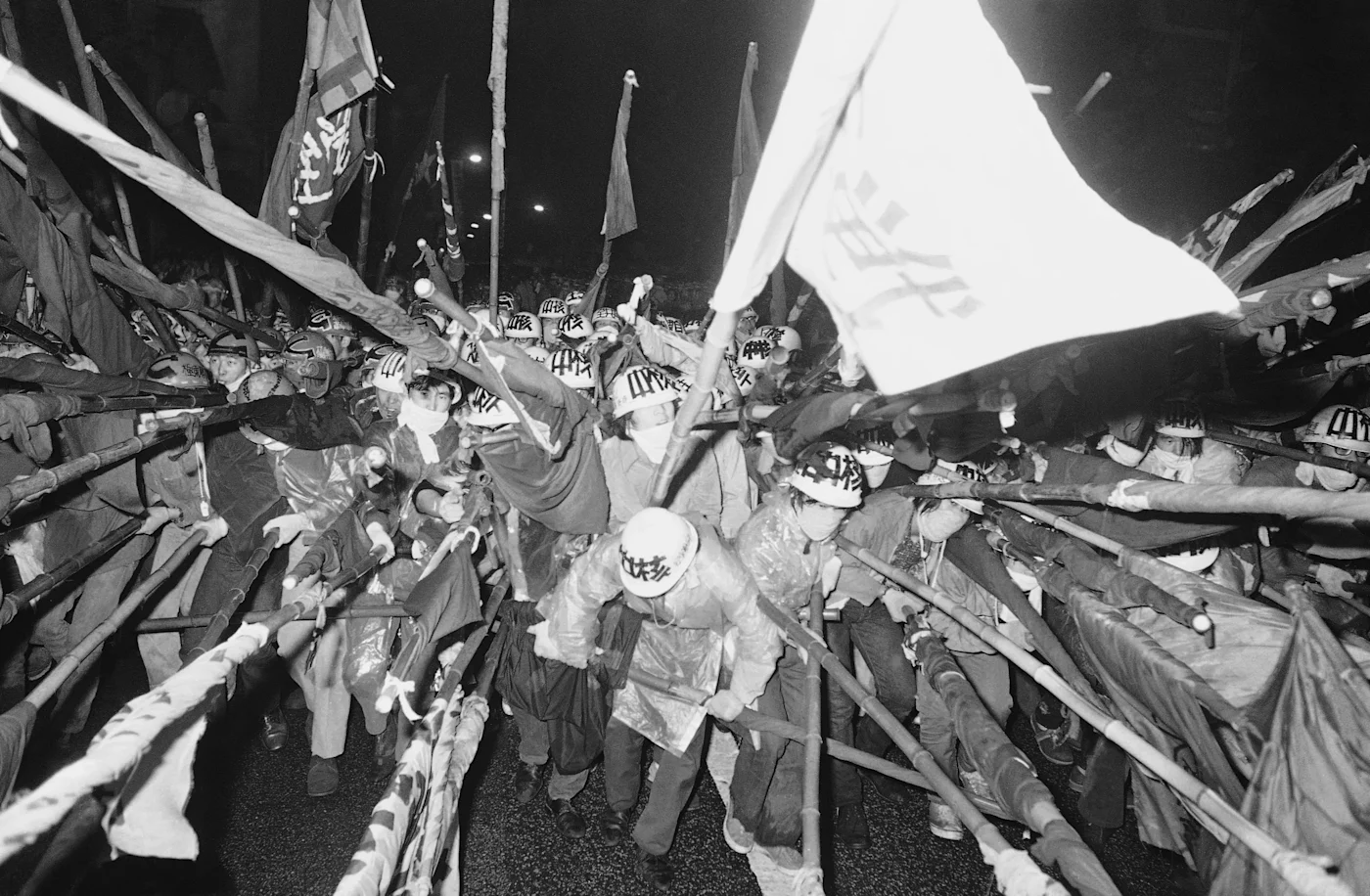
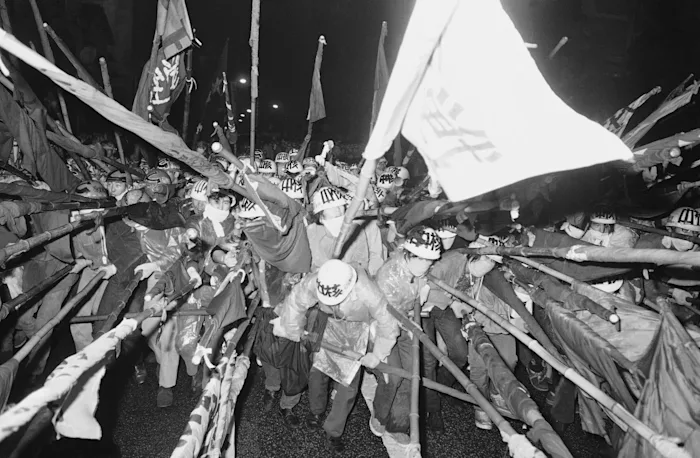
Thereafter, Chūkaku-ha defined Kakumaru-ha as “counter-revolutionary” and prepared for war against them. But Kakumaru-ha’s offensive continued, as Chūkaku-ha themselves admitted: “Kakumaru-ha succeeded in taking advantage of an offender.”14 This conflict was marked by an evident imbalance of manpower: while many members of Chūkaku-ha had been incarcerated during their intense opposition against the state up until the early 1970s, the forces of Kakumaru-ha had been left mostly intact thanks to their prioritization of self-protection and the expansion of their party organization. What distinguished Kakumaru-ha from Chūkaku-ha was that the former not only assaulted the latter but also non-sectarian radicals to solidify their hegemony in universities and labor unions. In contrast, Chūkaku-ha was less aggressive to non-sectarians for their territorialization and often approved or even admired by some non-sectarian fighters due to their self-sacrificing commitments to action.
In December of 1972, Kakumaru-ha murdered a non-sectarian student in Waseda University Tokyo who was a sympathizer of Chūkaku-ha, which provoked most politically active students to denounce Kakumaru-ha and their intimidation on the campus. This brought to a close Kakumaru-ha’s long-lasting rule over the university, although they would eventually regain their hegemony by maximizing their threats on the campus. In consequence, Kakumaru-ha came to be detested by many.
Meanwhile, within Chūkaku-ha, a significant restructuring was taking place in preparation for the total war against Kakumaru-ha, which consisted in reorganizing their members in public labor unions into a clandestine army. During this period, they went so far as to refer to their sectarian conflict with Kakumaru-ha as a “civil war,” arguing that Japan was currently experiencing a return to the prewar situation like the 1930s in which the defeat of revolution had been due to the failure in fighting fascism. And if Kakumaru-ha was today’s fascist organization, then, like the Nazis, therefore, the primary revolutionary task must be to topple them.
In July 1973, Chūkaku-ha declared a “revolutionary war of retaliation” in their political assembly; after September, they began a concentrated assault upon Kakumaru-ha, day after day. In September 1974, Kakumaru-ha made a public comment which explained Chūkaku-ha’s offensive as a conspiracy on behalf of the government, reasoning that Chūkaku-ha, whom they had long ago extinguished, could not have sustained such power. In March 1975, Kakumaru-ha assassinated the highest ranking leader of Chūkaku-ha, Nobuyoshi Honda. As their mutual animosity spun out of control and came to be perceived by the public as a social problem, twelve prominent intellectuals and authors, who were sympathetic to the new left movement, publicized a joint proposal to “both factions of Kakukyōdō to stop uchigeba.”15 But there would be no simple end to this situation.
During 1971 and 1973, recourse to uchigeba among ultra-left groups witnessed a rapid escalation, from clashes during assemblies to surprise attacks during demos, raids on university bases, as well as targeted assaults on individuals at their private homes. All available tactics for weakening the enemy were deployed: eavesdropping on telephone conversations, threatening letters, distribution of fake publications, and so on. The last of the large-scale assaults was Chūkaku-ha’s massacre of five members of Kakumaru-ha in 1980. Thereafter, Chūkaku-ha declared that their sectarian conflict with Kakumaru-ha entered a new stage and lessened their commitment in it.
But Chūkaku-ha had deeply internalized a propensity for violence against their kin. In 1983, when the Sanrizuka League against the Construction of the Narita Airport split into two factions, Chūkaku-ha assaulted several members of the Fourth International Japan, which was the central support organization for the opposing faction. In the mid-1980s, the Locomotive Engineers’ Union, which was Kakumaru-ha’s main labor front, had a hand in the privatization of the National Railway as part of the neoliberal reforms. In response, Chūkaku-ha waged a violent attack on the leaders of the union. It was only after the 1990s that the uchigeba between the two finally dwindled, when Chūkaku-ha shifted their focus to labor organizing. (The grand total of deaths during their uchigeba was forty-eight from Kakumaru-ha, thirteen Chūkaku-ha.)
Kakumaru-ha and Kaihō-ha
During the same period, Kakumaru-ha was at war with another sect: the Socialist Youth League; the Liberation Faction (Shaseidō; Kaihō-ha). This group was established in 1963 among the radicalized members of the youth organization (Shaseidō) of the Japan Socialist Party (JSP), which was the largest opposition party in the postwar parliament controlled by the Liberal Democratic Party. Kaihō-ha was an anti-Leninist group, seeking a form of council communism under the influence of left communist tendencies, including Rosa Luxemburg, who had also diverged from the Social Democratic Party. Kaihō-ha can be seen as part of the anti-vanguardist tendency that had emerged after the anti-Ampo struggle of 1960.

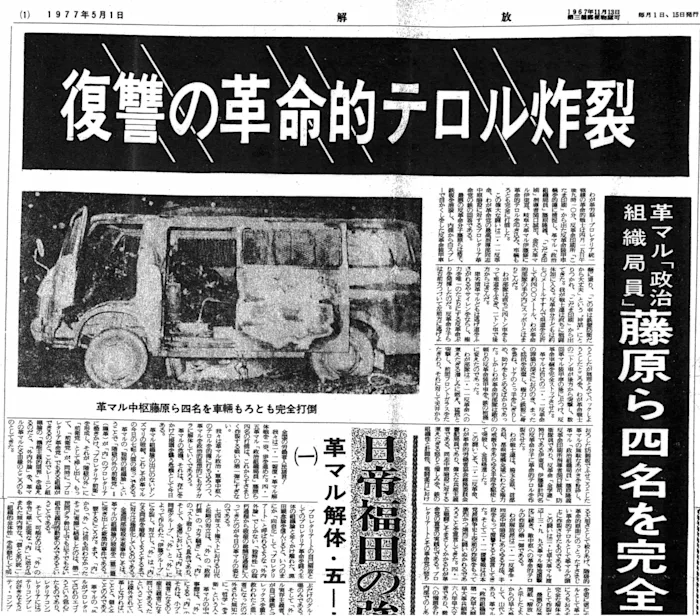
While expanding their influence in Waseda and Tokyo Universities, where Kakumaru-ha had held their bases, Kaihō-ha developed friction with them. Beginning from the early 1970s, their conflicts began to intensify. In September 1973, Kakumaru-ha conducted a night raid against Kaihō-ha members at Kanagawa University, but it was two Kakumaru-ha members that ended up killed during the battle. In 1974 one of the leaders of Kaihō-ha was heavily injured by Kakumaru-ha, and in 1975 a member was murdered. In retaliation Kaihō-ha assassinated two Kakumaru-ha members. Up until then, unlike Chūkaku-ha, Kaihō-ha had not defined Kakumaru-ha as its archenemy. But thereafter, they began to call for the extinction of Kakumaru-ha. In 1977, as the top leader Hajime Nakahawa was assassinated by Kakumaru-ha, Kaihō-ha defined them as “counter revolutionary” and retaliated by killing four members of Kakumaru-ha, including the theoretical leader Takayoshi Fujiwara. From this point forward, the two groups entered into a total war. (The sum total of deaths during their uchigeba was twenty-three from Kakumaru-ha, and two Kaihō-ha.)
Following this development, uchibega intruded into Kaihō-ha. There had always been friction between the students’ group and the workers’ group, which Nakahara had generally mediated. After his assassination, though, within Kaihō-ha the rift became a fracture. The difference between the two groups was twofold: the stance on the war with Kakumaru-ha, and the stance on the struggle of burakumin (the social outcasts particular to Japan, to which we shall return later). While the students’ group was actively engaged in the war with Kakumaru-ha, the workers’ group was more reserved. While the students’ group believed that the task of revolutionary proletariat was a full engagement in the struggle of burakumin, the workers’ group prioritized solidarity with the laboring proletariat over and beyond the buraku community.
The internal conflict became conspicuous when the student group accused the workers’ group of writing a discriminatory flyer concerning the Sayama Incident (where a burakumin was falsely charged as a murderer), and demanded their self-criticism. In 1981, the two groups — the students’ faction (Hazama-ha) and the workers’ faction (Takiguchi-ha) — broke completely. The former began to attack the latter, causing further splits and fractions, heavy injuries, and deaths. These multiplying processes of internal conflict were driven by an implosive concentration of violence. Calling each other double-crossers or counter-revolutionaries, multiple groups within Kaihō-ha continued uchigeba through 1999, resulting in ten dead bodies.
The Internal Dynamics of Uchigeba
If the URA affair was a tragedy caused by a forceful effort of unification within a context of generalized fragmentation of the mass impetus, uchigeba was a disaster caused by an unacceptability of separation within a party, namely, an unacceptability of divergence between comrades. It stemmed from an inability to accept differentiation in beliefs about forms and strategies of organization, or beliefs concerning the revolution more generally.
After the break-up of BUND, Chūkaku-ha, Kakumaru-ha and Kaihō-ha stood out as the most influential sects in terms of mobilization and manpower. It is surprising to recall that during the 1970s, while the three sects concentrated so much energy on uchigeba, they were still able to sustain their capacity to mobilize oppositional militant actions, some of which were undoubtedly effective. One sees their commonality not only in the fact that they were the protagonists of uchigeba war, but also in a couple of tendencies. Their theoretical formations were equally inspired by the alienation theory of young Marx, and they came to share a distinctive strategy for labor organizing. Kakuraru-ha employed the entryist tactic to intervene in labor movements, most of which had been operating under the control of the old left (the JCP or the JSP), in an effort to change their orientation from within. In contrast, Chūkaku-ha and Kaihō-ha sought to destabilize existing labor movements by means of wildcat strikes and militant actions at labor disputes, though they too considered the workers as the subject and designed their interventions equally so as to radicalize labor movements. These approaches formed a stark contrast with those of other new left sects: BUND, the Fourth International Japan, the Structural Reformist Faction (influenced by the Italian Communist Party leader, Palmiro Togliatti) et al., who positioned themselves outside the labor movements and mostly opposed them. These differences triggered a generalization of small scale uchigeba.
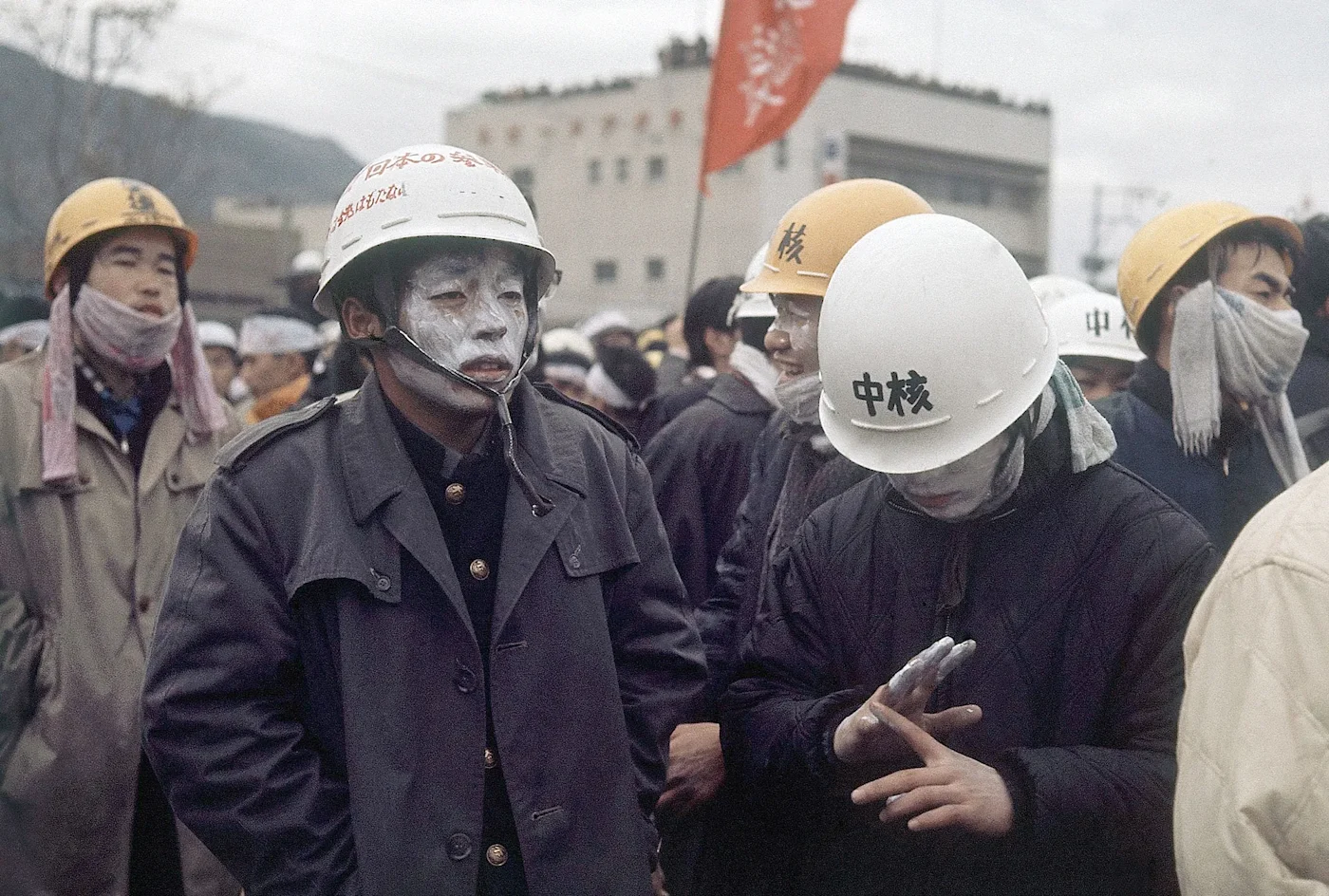
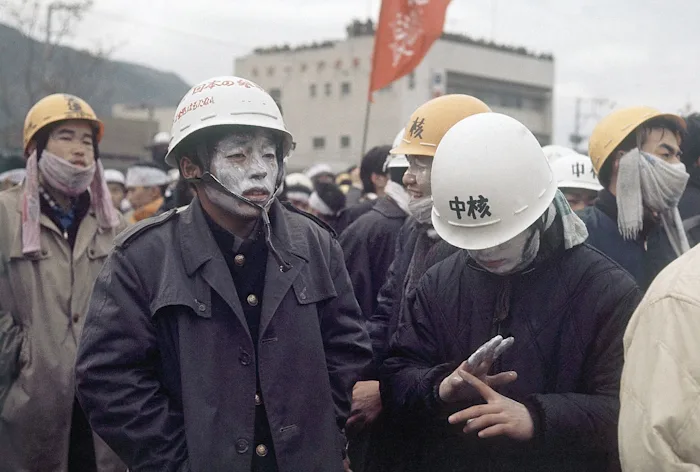
Kakumaru-ha considered the extinction of Chūkaku-ha and Kaihō-ha as a necessity for the fulfillment of their goal. For Kakumaru-ha, whose modus operandi was grounded in the idea of human labor as a teleological and technical practice, the impetus of 1968, in which both Chūkaku-ha and Kaihō-ha participated, was nothing less than counter-revolutionary. To understand this conflictual divergence, the theorization of “the long ’68” by Hiroshi Nagasaki offers a useful reference. During the 1960s anti-Ampo uprising, Nagasaki was a key member of BUND’s Tokyo University cell. Reflecting on the uprising, which was a bitter failure for the BUND organizers, he developed a theory that grasped the core of revolutionary politics (the question of organization) in response to the experience of mass insurrection. He presented this in his book, On Insurrection, which was completed in the year 1968, when he was active in Zenkyōtō.16 In reference to Lukác’s critique of modernity internalized not only in liberalism but also Marxism, the book depicts the 1960’s anti-Ampo struggle as a rebellion against modernity. And his following book, Cadre and Technique (1971) argues that the struggle of 1968 was a process of staging “a destruction of labor” in the rebellion.17 The latter book criticizes the theory of Kuroda (Kakumaru-ha) for conceiving the proletariat as striving for “a return to an original form of human labor” or “the home of labor” to be “captured by ‘consciousness’ (a concept of the Enlightenment) and made to survive only in the promised organization of a vanguard party.” Against this view, Nagasaki asserts, “the emergence of the proletariat is experienced only in the eruption of practices that destroy the forms of existence determined by the modern world, namely, the labor where social labor permeates.” This is to say, the frontline of rebellion against modernity is found not in the restitution of labor through the battle between wage labor and capital, but in the extinction of labor itself. For Nagasaki, it was the emergence of this proletariat that took place between 1960 and 1968 or in the long ’68.
All in all, for Kakumaru-ha, to disassemble Chūkaku-ha and Kaihō-ha was the sine qua non for sustaining the authenticity of their theory of revolution. These two were unforgivable because, while having started from the same theory that aimed at the sublation of alienated labor, they both went down the wrong path toward the destruction of labor. Moreover, for Kakumaru-ha, their determined assault on Chūkaku-ha was also necessary to overcome the trauma of Kakukyōdō’s original separation in 1963, while their assault on Kaihō-ha was necessary in order to protect their party of consciousness against those who threatened it. By 1972, the leader of Kaihō-ha, Hajime Nakahara, had defined their party simply as “a liaison of solidarity for the universality of the class.” This definition formed a stark contrast with Kakumaru-ha’s conception of the party. However, the sectarian war against Kakumaru-ha forced Kaihō-ha to mutate their original liaison form to militarized cells multiplying in mutual destruction.
In July 1970, Japan’s new left movement confronted an unprecedented challenge by an external intervention. The Oversea Chinese Youth Struggle Committee (Kaseitō), that had been organized by the Resident Chinese to oppose the Japanese government’s new immigration law, criticized the way the Japanese new left belittled Kaseitō in their speeches in the joint meeting for preparing a rally to disrupt the constitution of the new law. Pointing out that the Japanese new left sustained a remnant of the Japanese imperialism, Kaseitō declared a total severance from them.
Chūkaku-ha took it seriously and made self-criticism of their previous stance vis-à-vis the oppressed people a central task for their new political line. After 1972, they came to center their struggle around the support for an inhabitant of buraku who was falsely accused of murdering a high school student in the Sayama Incident. Even in the postwar period, Japanese society had engaged in systematic discrimination against specific communities (buraku) and their inhabitants (burakumin), a discrimination that had become customary in various parts of premodern Japan. While the JCP considered that the discrimination would vanish along the development of capitalism, the Buraku Liberation League (Buraku Kaihō Dōmei), with which Chūkaku-ha collaborated in the 1970s, held that capitalism itself was reinforcing the discrimination. For them, the abolition of capitalism formed a necessary precondition for the abolition of the buraku discrimination. Thereafter, the main task of not only Chūkaku-ha but also other new left sects shifted from political opposition to social struggle. It goes without saying that this new tendency was an extension of the fragmentation impetus. But their engagements in this struggle went side by side with the uchigeba war.
Conclusion
Kasane Kiriyama, an author who wrote several novels in a style of fantasy but based upon his own memory of the struggle, described the terminal phase of uchigeba as follows:
As soon as they saw our movement in decline, with many injured and jailed, the morticians of revolution descended upon us, in order to wipe our movement out from all territories. […] The battle against the morticians was urgent. […] So, our sect sought to fulfill our responsibility as a revolutionary movement by burying half of our bodies underground.18
Here “the morticians of revolution” meant Kakumaru-ha, and “our sect” referred to Kaihō-ha. This narrative reveals how, during this phase, “[his] own sect was affected by corrosion” while spreading “a theological atmosphere.” This text offers a remorseful depiction of how revolutionary sects immersed themselves in uchigeba by spreading a faith in which the sacred task is to be accomplished by one and only one revolutionary party, come hell or high water.

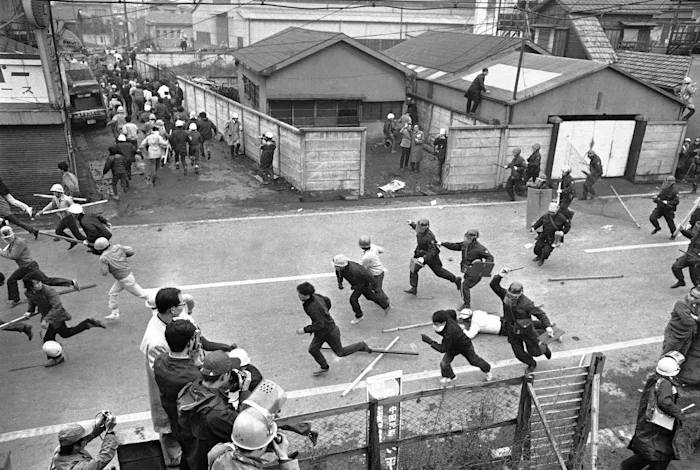
For both Chūkaku-ha and Kaihō-ha, the terminal phase of uchigeba developed in parallel with a reorientation of the political agenda toward anti-discrimination struggles. But there was a difference: for Chūkaku-ha, the parallelism included a polarization between social struggle and political struggle, whereas with Kaihō-ha it proceeded toward an impossible centralization of the party. As we have seen, this centralization created multiple fissures within Kaihō-ha. Having been a non-Leninist organization, they were unable to create formalized factions like BUND. Their situation led them in the opposite direction: while factionalism became taboo, internal fissures generated a violent centralization, with the various cells fighting among themselves to lay claim to the true party.
Up until 2004, the sum total of death by all uchigeba was one hundred; that of the heavily injured was over five thousand.
We have interpreted two tragic events — the United Red Army Affair and uchigeba — as distinct embodiments of a maximal tension between two dynamics: centralization and fragmentation. The dissension between them recursively affected the sectarian organizations, materializing in internal rifts followed by internecine strife. Such experiences ought to make us question the relationship between the revolutionary party and the masses (and insurrection). Following the URA’s decision to identify their armed forces with their party, the masses came to be seen as little more than sources of recruitment, or a forest-like base in which they could hide. For Kakumaru-ha, whose party was charged with the task of materializing proletarian consciousness, mass insurrection as such was out of the question. In contrast, Chūkaku-ha sought to organize the rebellious masses to be their insurgent forces. For their part, Kaihō-ha envisioned their party to be the union of the proletariat, namely, of the masses themselves.
Reflecting on the experience of 1968 in his aforementioned Cadre and Technique, Nagasaki proposed to reconsider the problematic of revolutionary organization by returning to the event of insurrection from out of which the necessity of a party had emerged in the first place, that is, by returning to the numerous organizers who initiated and enacted the insurrectional event. From this initial approach, he then proposed that we assume the existence of two forms of the party: “the party for-itself,” and “the party of people.” The former might be seen as a larval party, as it were, that emerges among numerous organizers even where a conscious effort to create a party does not exist yet. This precursory form could be found among the free associations born directly out of the rebellion, such as Zenkyōtō or other action-oriented committees. The latter refers to the actual party that emerges when the former attempts to assert its hegemony. This attempt, however, requires a political process of external intervention that introduces revolutionary ideas or institutionalized platforms into the insurrectionary masses. Such interventions are destined to collide headlong with the insurrectionary impetus, which destroys all institutional framings. It was this aporia that, in the case of the Japanese rebellion, led to the internecine massacres experienced by the parties of the new left sects.19 As Nagasaki observes in his more recent book, Liberating Insurrection (2021), Japan’s ’68 consisted of both a larval party that lived and died with the insurrectionary impetus, and an actual party that could not survive it without tragedy. As he stresses, however, the real political process of rebellion bore witness to their merger at the peak moments of 1968.20
In its essence, the insurrectional impetus enacts the detotalization or fragmentation of existing socio-political orders. If it is to become a revolutionary opening, what is the nature of the party that could interact with detotalization or fragmentation and fulfill the necessity of revolution? We cannot answer this question at the moment. But the United Red Army Affair and uchigeba at least highlight, albeit in their extremely negative manners, the central aporia that the insurrection had confronted in moving toward a revolution.
Cover image: Hitomi Watanabe, “Tokyo University Zenkyoto, 1968-1969”
Notes
1. Continued: White Paper on Zenkyōtō (Zoku Zenkyōtō Hakusho), produced by the Editorial Committee for Zenkyōtō White Paper, Jōkyō Shuppan, 2018. ↰
2. Uchigeba is a Japanese compound word consisting of uchi (inter or inner in Japanese) and geba (a Japanese slang made from the German word Gewalt). ↰
3. On the “long ’68,” see Sabu Kohso, “Life of Militancy: Japan’s Long 68,” Ill Will, January 2024. Online here.↰
4. Masaaki Hiraoka, The Beginning of a Man [Hitonohatsu], Sairyusha, 2012.↰
5. Masaaki Hiraoka, Big Revolution [Dai Kakumei Ron], Kawade Shobō Shinsha, 2002.↰
6. Geba-bō is another example of compound word: geba is the same as geba of uchigeba and bō is literally ‘stick’ in Japanese. ↰
7. Masaaki Hiraoka, Armed Sensuality [Kannō Busō Rom], Sairyusha, 1989.↰
8. To be precise, Kuroda grasped Nishida’s ontology via the philosophy of Akihide Kakehashi, who attempts to conceptualize universal history as a synthesis of the histories of cosmos, organic life and society — that is, as a dialectical auto-realization of the material — by way of a merger of the philosophy of Nishida and Marxian materialism↰
9. Karl Marx, “Introduction (1844),” in Critique of Hegel’s Philosophy of Right, translated by Annet Jolin and Joseph O’Mailey, Cambridge University Press, 1970. Online here.↰
10. Kan’ichi Kuroda, Hegel and Marx, Gendai Shichō Sha, 1968. ↰
11. On March 31st, 1970, nine members of the RAF hijacked a domestic JAL flight, took passengers hostage, and demanded that the plane travel to North Korea. Their intention was an exile to the country as part of their project to create bases for the world revolution. While their exile was accepted by the North Korean government, they could not fulfill their original goal to make the country one among other bases. Instead, the members were detained and “reeducated” in North Korea. ↰
12. Innumerable reports, novels, and movies were made on the subject. While most involved scandalizing or fictionalizing aspects, the movie by Kōji Wakamatsu — United Red Army (2007) — allegedly follows the development of the affair faithfully, out of the director’s sympathy for the revolutionary left of the time. ↰
13. Michel Foucault, Power/Knowledge – Selected Interviews and Other Writings 1972-1977, translated by Colin Gordon, Leo Marshall, John Mepham, and Kate Soper, Pantheon Books, 1972. ↰
14. From Chūkaku-ha’s organ Advancement [Zenshin], Issue 655, 1973.↰
15. The intellectuals included novelists Yutaka Haniya and Mitsuharu Inoue as well as a historian Daikichi Irokawa. ↰
16. Hiroshi Nagasaki, On Insurrection [Hanran Ron], Gōdō Shuppan, 1969. ↰
17. Hiroshi Nagasaki, Cadre and Technique [Kessha to Gijyutsu], Jōkyō Shuppan, 1971. ↰
18. Kasane Kiriyama, A Chronicle of Wind [Kaze no Kuronikuru], Kawade Shobō Shinsha, 1985. ↰
19. Nagasaki, Cadre and Technique. ↰
20. Hiroshi Nagasaki, Liberating Insurrection [Hanran o Kaihosuru], Getsuyo sha, 2021.↰